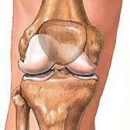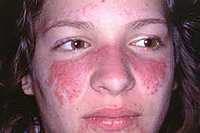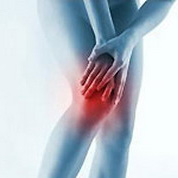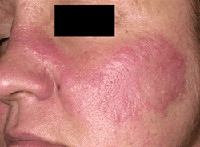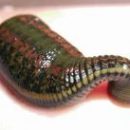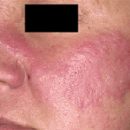What is a aseptic necrosis of the femoral head? What are the manifestations of this disease? Answers to these questions you will find in the article.
Content
Aseptic necrosis of the head of the femur
Aseptic necrosis heads of the femoral bone - severe disease of the hip joint due to the violation of the bone structure, microcirculation and bone marrow dystrophy.
 The problem of degenerative-dystrophic lesions of the kost-articular apparatus is complex, first of all, due to the lack of clear ideas about their essence and place among other diseases.
The problem of degenerative-dystrophic lesions of the kost-articular apparatus is complex, first of all, due to the lack of clear ideas about their essence and place among other diseases.
Currently, degradative-dystrophic diseases of the joints include deforming arthrosis (osteoarthritis), degenerative-dystrophic lesions with a cystoid restructuring of articular bones, aseptic osteonosis.
The change in the structure of bone tissue and the corresponding pathological processes are noted in a number of diseases. They arise as a result of a number of factors: microtrams acquired or congenital deformations, exceeding the limit physical exertion, hormonal and metabolic disorders, infectious-allergic diseases, systemic diseases associated with impaired homeostasis, toxic effects, infections preceding orthopedic procedures, etc.
In addition, pathological deviations from the normal sequence of the formation of tissue generations may occur at any time of human life.
Clinically changes in the structure of bone tissue for diseases that are based on the degenerative-dystrophic processes are manifested by the growing deformation of the epiphysis and apophysis of bones, pains and violations of the functions of hip joints.
After analyzing structural and radiographic changes, we brought four stages of dividing aseptic necrosis of the femoral head.
Stage I Stage. Microscopic changes in the structure of the bone and the stacking osteoneksis. The sponge substance is affected by the head of the femoral bone with unchanged cartilage and the zone of structural changes is no more than 10%.
Stage II. Impressive fracture. The surface of the femoral head has a type crack «Cracked shell». In the load zone of Trabez have cracks of irregular shape or foci of microcollaps. The zone of structural changes is no more than 10-30%.
III Stage. Fragmentation. It is characterized by the irregularity of the contours of the femoral head, the mild degree of collapse, the occurrence of several foci of sealing or cystic rebirth. The intermediate space changes (narrowing or expansion). The zone of structural changes is no more than 30-50%.
IV Stage. Full destruction of the head. The shape of the head is changed, the sections of the collapse of the wrong shape or the collapse of the entire head. The structure of the trabeculae was dissolved or sealed, the strip of cracks of the wrong shape. Internal or outer edges of the grateful depression undergo ectopic changes. Intermediate space narrowed or disappeared. There are dislocation or submissions. The zone of structural changes is 50-80%.
The duration of the flow I stage is 6 months, stage II - 6 months, stage III - 3-6 months, followed by the transition to IV stage.
Using these regular dispensarizations and data inspections of therapists and traumatologists, we have been formed by an algorithm for identifying the disease.
From clinical manifestations, and require a comprehensive and dynamic assessment of pain in the area of hip joint, pain in the groove region with an impact into the knee joint, restriction of movements in the hip joint, signs of muscle atrophy, unmotivated pain in the knee joint. Special attention has been drawn to patients in risk groups.


